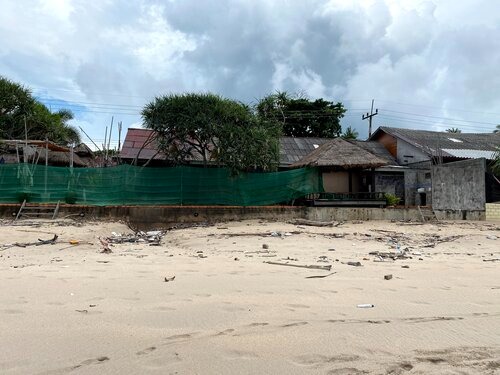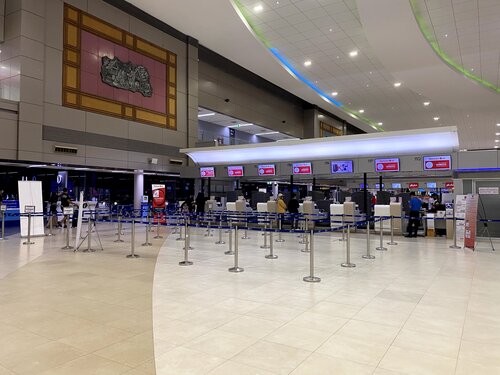
The taps are turned off and the stream of beach-goers, high-end shoppers, medical tourists, and yoga practitioners has become a trickle. Tourism, which accounted for 20% of GDP, turned the gears of the Kingdom’s economy. COVID-19 brought that to a halt when Thailand closed her international borders and shut-down domestic travel. With only 58 deaths and 3,350 cases (to date), around the world Thailand is celebrated as a COVID success story.
Victory over the virus came with a cost as the Thai economy contracted and millions face unemployment. With the situation now more manageable, domestic tourism is returning with stimulus being provided by the government. Though the border is open to 4 categories of foreigners, tourists are not yet allowed into the Land of Smiles.
Masks are mandatory everywhere and there has been zero push-back against this. In Thailand, like many cultures in this region, masks are viewed as a kindness to others. If you are feeling a bit sniffly, your colleagues see your mask-wearing as conscientiousness. Temperature checks, hand sanitizer, and social distancing are common (though spacing in a nation as populous as Thailand can be challenging). Thai Chana, a nation-wide, web-based app, uses QR codes to facilitate contact tracing. It’s unlikely that any of this will disappear anytime soon.
The relaxing of the lock down has allowed those of us in Thailand, both Thai and foreigner, to experience this stunning country without throngs of visitors. At times it feels both apocalyptic and serene.
Since the easing began, we’ve tried to get out of Bangkok as much as we safely can. The loosening of rules doesn’t mean the pandemic is over and so we’ve ensured our travels don’t put us in the midst of crowds. We’ve made it to 4 provinces (with one more trip to go before our oldest two return to school). While traveling, we’ve stayed in locally owned hotels or airbnb, eaten at local restaurants, and shopped in markets as much as possible. It’s good for our souls to be out of our flat (especially after spending 4 months inside), but we want our escapes to be good for small business as well.
Our presence in communities away from Bangkok evoked excitement or fear within the people we met. Some small business owners were thrilled to see potential customers and all but dragged us into their shop. Others were genuinely terrified to see foreigners as the media has blamed the pandemic on those from abroad. With masks on and social distancing, we would assure people in Thai, but to little avail. Xenophobia, like all fears, is hard to reason with.
Tourism Now
“Call ahead” has become our new norm (in addition to all the other new norms). Many places have closed, some permanently, so even if their website is live, it is best to call and confirm that things are open. There are also great deals to be had and speaking directly with hotels, and not third-party booking sites, has opened the door to incredible discounts.
We drove ourselves to a smaller island in the south last week and most of the beach-front businesses were closed. Wrapped in green or black construction mesh, there were few signs of life. Without tourists, hotels, restaurants, and day-trip providers all shuttered their businesses. This sent workers back to their home provinces and caused local shops and grocers to close. Being a tourist right now can mean slim pickings for where you stay and eat.
Road tripping in Thailand now involves roadside checkpoints where temperatures may be taken and questions asked. When the restrictions first started easing, these checkpoints were plentiful. On our trip south and back (4 days of driving), we passed through several checkpoints but were never stopped. They are part of the new normal that we want to note for you.


For work, we also had a quick trip to Chiang Rai (Northern Thailand) without our 4 kids. It was our first time flying since February. Thailand’s budget, domestic airlines are running with no social distancing on board, but masks are a must. Flight schedules are reduced and there were virtually no lines at the airports. Ticket prices were comparable to pre-COVID pricing, but the glory days of ultra cheap flights may not return. At least one budget airline has already filed for bankruptcy protection (as a precaution, they assure us). We should note we flew from Don Mueang Airport (DMK) – Bangkok’s secondary airport. We’ve heard Suvarnabhumi (BKK), the main international airport, has stricter controls.
For people in the 4 categories who are able to return, a 2 week mandatory state quarantine awaits them (to be done in a state facility or “Alternative State Quarantine – ASQ” at a nice hotel but with a sizeable price tag). The days of flying in for a week on the beach are over (for now).
TOURISM IN THE FUTURE
The Tourism Authority of Thailand (TAT) had explored the idea of travel bubbles with select regional countries. However, COVID surges in those nations have all but ended that idea. TAT also bounced around the idea of Thailand moving away from mass tourism to targeted, high-end tourism – essentially exchanging quantity for quality. So much of Thai tourism depends on hoards of backpackers and young travelers getting their first taste of South East Asia that such a shift would rock restaurants, beach towns, hostels, and countless neon-lit bars. Though the shape of the way forward remains blurry, the constant thread through all these conversations is a move towards ensuring Thailand is a “trusted” destination as people seek to return home from vacation without COVID as a souvenir.
There has been no official statement on when the borders will reopen to tourists, but many here have speculated that we should not expect anything before 2021.
If you are in a position to travel, do your homework to see if you can come. If you can, be sure to call ahead and ensure things are open.
